Card game dynamics in Gods Unchained for beginners
While the actual meta and popular decks may change quite often in card games, depending on balance changes and updates, it's important to understand why a strategy is strong in the first place. If you're new I'll help share my best understanding of the general dynamics of card games, specifically Gods Unchained.
Speed
The first thing to think about is how fast your deck is. This is the phase of the game where your deck is the most powerful and has the best chance of winning. In Gods Unchained fast decks are typically going to win by turn 7-8 (around 6 mana), medium decks will win about turn 10-13 (around 7 to 8 mana), and slow decks are 14+ (8 to 9 mana), and the absolute slowest decks will go into fatigue which is when your deck runs out. Of course how long a game lasts depends on the matchup between both player's decks.
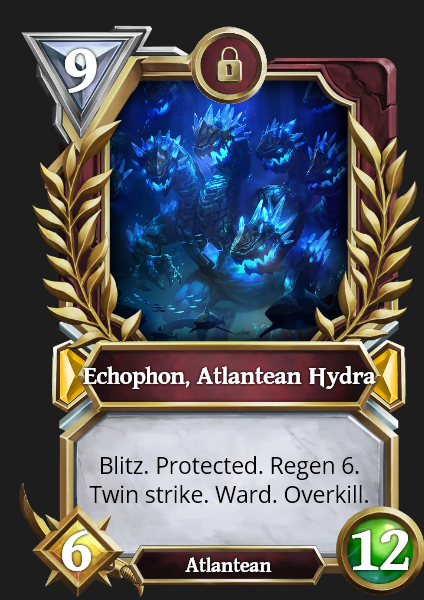
A card like Echophon, Atlantean Hydra might be very powerful if you can play it, but if the rest of your deck isn't built to get to 9 mana then it's pretty much useless to have in your hand.
Board Control
How many creatures do you have vs. your opponent. If you have several creatures out and your opponent has none, adding more doesn't give you much more board control since you already have plenty. Instead you may want to try drawing more cards or buffing the cards you already have on the field.
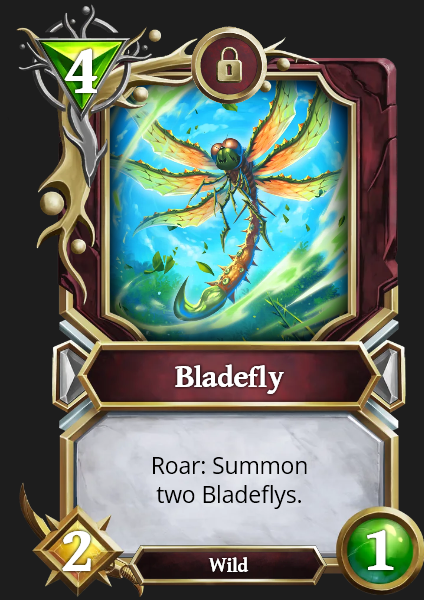
Bladefly gives you 6/3 in stats for 4 mana which is alright, but it's spread across three creatures. Meaning it's easier for your enemy to get rid of all of them with high health or a board clear spell. If they can't then it would give you a lot of board control! Especially if you can buff all of them afterwards. With something like Oliphaunt Mount.
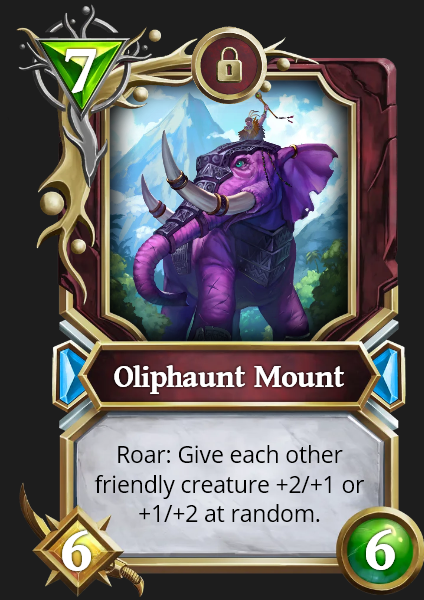
Consistency
One of the main things about card games is the randomness. The best decks are not the ones that kill the enemy the fastest or hardest, they're the ones that win the most consistently.
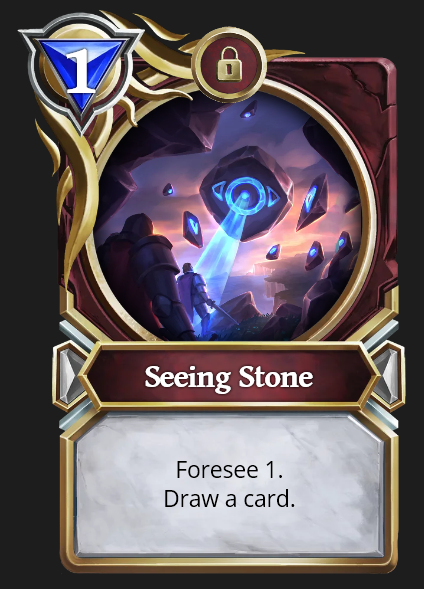
Seeing Stone is a card that helps make your deck more consistent. It cycles itself out by drawing a card, but it also has a good chance of giving you a card you need because you get to Forsee it before it's actually drawn. If you want to draw one specific card then playing a card like this is ideal.
Value
On a per card basis you need to think about value. In card game terms, value is about getting a good trade. So one of your cards will take out two of theirs. How much "value" a card has is determined by it's mana cost, it's stats, and potential use.
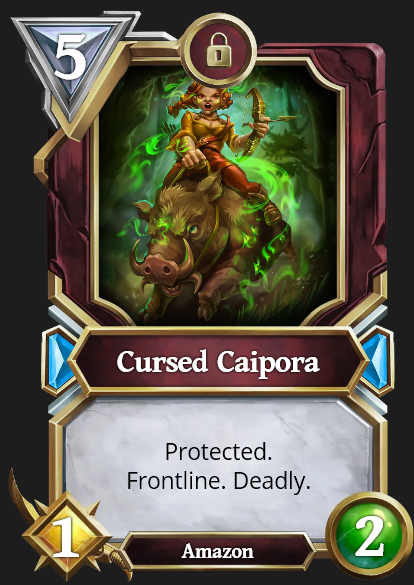
Cursed Caipora has very bad stats for its mana cost but it makes up for that by having protected, frontline, and deadly. So even though it only has 3 stats for 5 mana, it can still take out 2 of the enemy's big creatures if you're lucky.
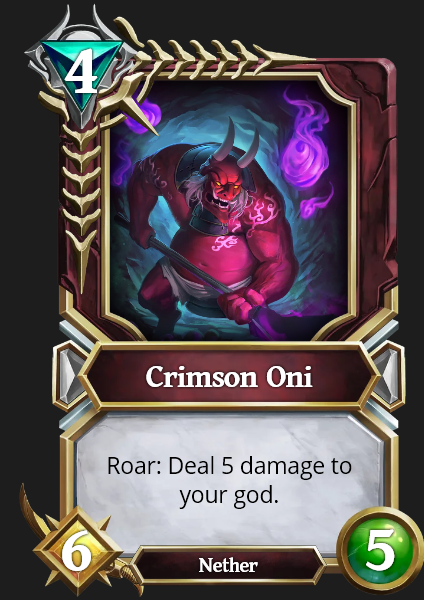
Crimson Oni is another example of a card with high value but in terms of raw stats. It has 11 stats for 4 mana. Of course those stats need to be distributed well. Usually you want cards with health roughly equal to or slightly higher than attack, but it depends on a large amount of factors.
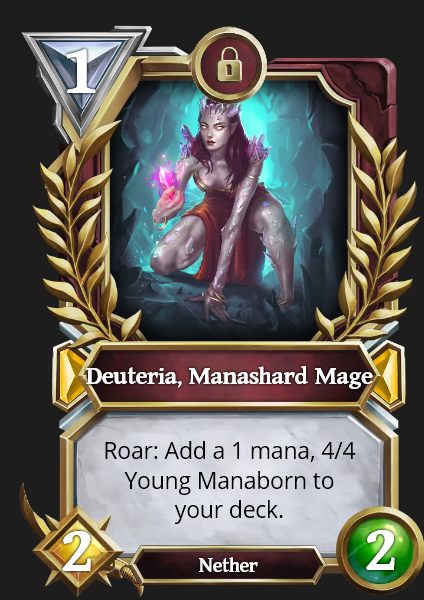
Deuteria is a card with a lot of value, but it doesn't take place immediately. By itself it's a simple 1 mana 2/2 which isn't anything special, but the creature it adds to your deck is a 1 mana 4/4 which is very good value! The only thing is that it might take you a while to actually draw it.
Proactive and Reactive
You should think about his how proactive or reactive your deck is. Typically faster decks are more proactive and slow decks are more reactive, but not all the time.
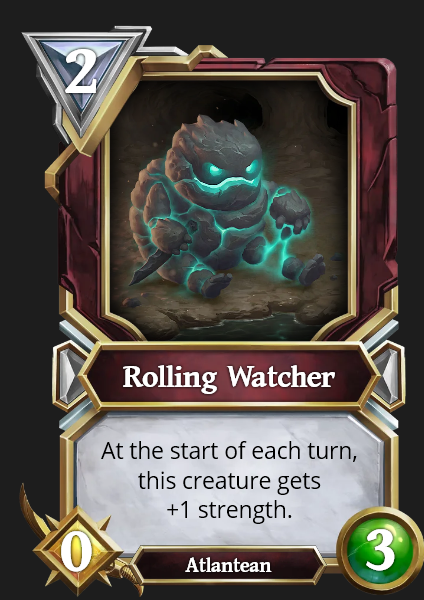
A proactive card is best when you have an advantage over your opponent like better board control. These are known as snowball or "win-more" cards since they can keep getting better the longer they stay active. A card like Rolling Watcher isn't great to play when the enemy already has creatures in play that can kill it, but if their board is empty or you have a good frontline creature then it can be very annoying to deal with. These are the type of cards you want to prioritize your removal spells on.
The opposite of that, reactive cards, are better when you're at a disadvantage. If your opponent goes all in and plays everything, then you can turn the tide with a comeback card and leave them with nothing left.
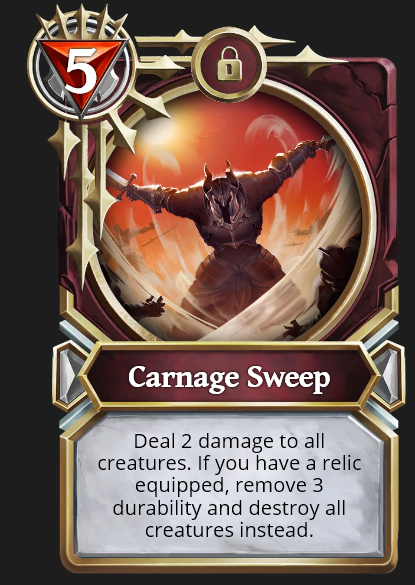
A board clear card like Carnage Sweep can take out all of the enemy's creatures by spending only one card of yours. It's also better when you have no creatures on the board, so it's a comeback card. Since it damages your own creatures you can't play it proactively.
Tempo
The swing of how proactive and reactive you are vs. your opponent is called tempo. If your deck has good tempo then it means you can have a strong card to play just about every turn and overwhelm the enemy.
If you have bad tempo then it means you're wasting turns with nothing to play and leaving empty mana crystals. Sometimes you will have bad tempo early on because you're building up towards a huge swing to end the game in one fell swoop.
Ideally though, you would have something to do every turn that helps you out in some way.
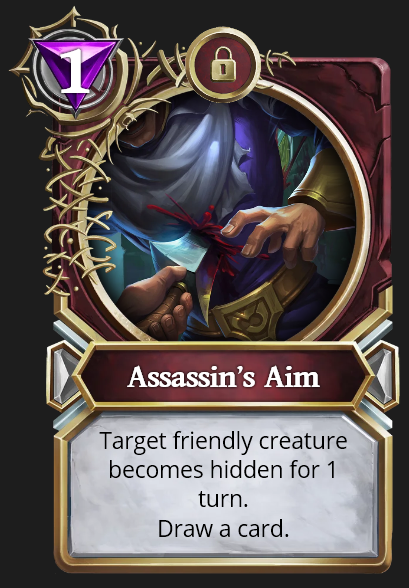
Assassin's Aim is an example of a card with pretty good tempo. It might not do much by itself, but it can keep one of your creatures alive another turn and draw a card for only 1 mana. It can be played proactively to prevent your creature from getting hit by a spell or if you just need to draw more cards. You can use it reactively to prevent your creature getting killed by what the enemy has already played on the board.
Combo
Many decks also revolve around one strong combo and put everything towards it.
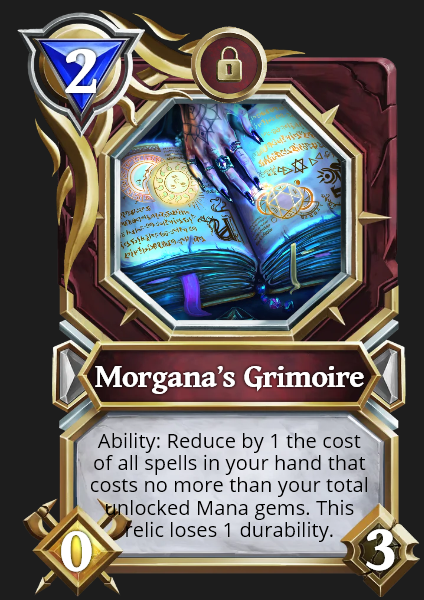
![]()
One strategy right now is to play Morgana's Grimoire and use it on runes or cheap spells, then play Avatar of Magic, use those spells, and activate the Grimoire again to make your new Beam cards cost zero mana. By themselves each of those cards is a lot worse, so you want to save them up for when you can actually use that combo.
I hope you enjoyed reading this and learned something new or thought about card games in a slightly different way!
Congratulations @destroyedarkana! You have completed the following achievement on the Steem blockchain and have been rewarded with new badge(s) :
You can view your badges on your Steem Board and compare to others on the Steem Ranking
If you no longer want to receive notifications, reply to this comment with the word
STOPVote for @Steemitboard as a witness to get one more award and increased upvotes!